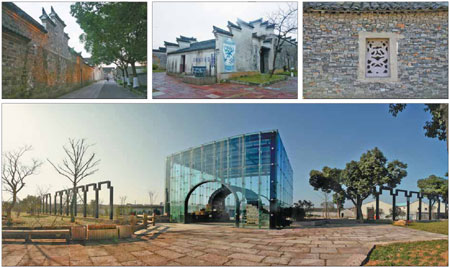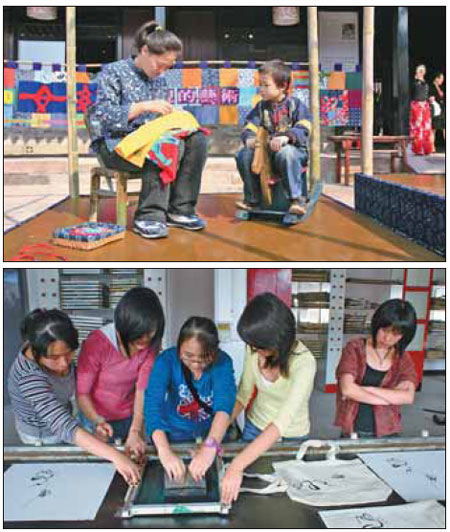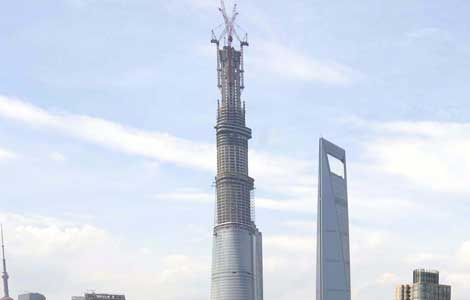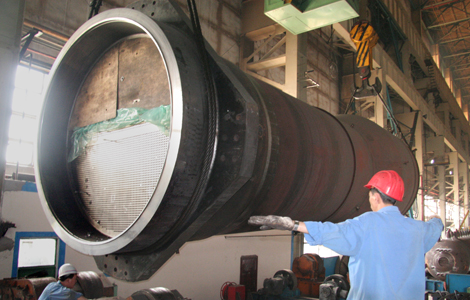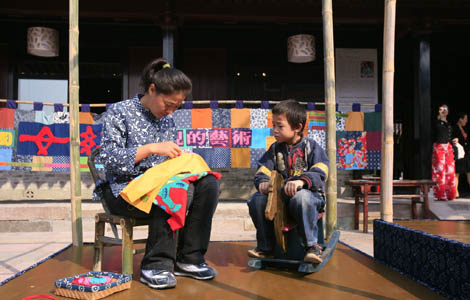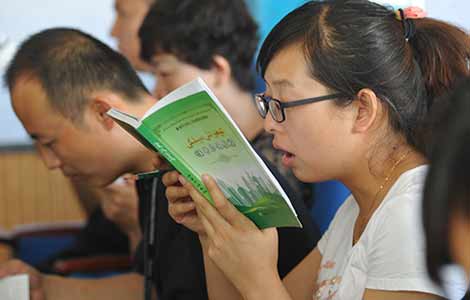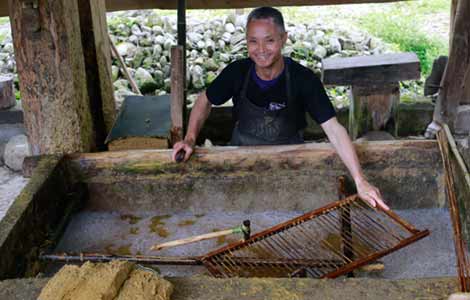Crafting a town
Updated: 2013-08-08 06:38
By Sun Yuanqing (China Daily)
|
||||||||
|
Clockwise from top left: The roads in Cicheng near Ningbo in Zhejiang province are paved with white stones and black pitch to indicate the old waterway and stone road respectively. A porcelain exhibition is staged in an old house. Scrap-walled houses are still common in Cicheng. The east gate and the "city walls" in the ancient town have a modern touch. Photos Provided to China Daily |
|
Top: A woman shows her craft at one of the Mothers' Art exhibitions. Above: Visitors experience a traditional printing method at a DIY workshop. |
Cicheng is an ancient town with a rich history, but instead of attracting tourists to its picturesque streets, it hopes to lure designers with its exquisite culture of handicrafts. Sun Yuanqing reports.
It is 38 C outside. The heat in the ancient wooden house is stifling. But the crowd keeps moving from one exhibition hall to another, frequently stopping for closer observation of the work on display.
Among them is Wang Weidong, president of womenswear label Broadcast. Wang came to Cicheng near Ningbo, about two hours' drive from Shanghai, to look at the possibility of setting up a studio here, tapping into the town's handicraft resources.
"This is a place where we can actually look back into our own culture," Wang says. "Only by doing that will we be able to think independently, rather than always following others."
Wang is among his many peers who are trying to find roots in Cicheng, a 2,400-year-old town that is trying to revive itself by preserving and innovating on its tradition of handicrafts in its tailored surrounding of architectural heritage.
At a time when Chinese ancient towns like Lijiang are being choked by tourism, Cicheng is trying to walk a different path.
Here, craftsmen spend a decade restoring a single street, handicraft artists devote a lifetime to honing their skills and designers indulge in meditation as part of their efforts to resonate with traditional culture in their work.
"We don't preserve Cicheng just for the sake of preservation. We want to preserve it in a way that allows modern people to continue to thrive in it," says Yan Zaitian, president of the Cicheng Development Company.
Stretching over merely two square kilometers, Cicheng's architectural heritage inspired Pritzker-winning architect Wang Shu. Its restoration of ancient architecture has won the UNESCO Asia-Pacific Award for Cultural Heritage Conservation. It was praised as one of 18 "heritage heroes" by UK-broadcaster the BBC, for its preservation of its traditional handicrafts.
Rich history
The town first came to public attention in the midst of a nationwide interest in ancient town revival more than 10 years ago. Back then, the prospects for the area were far from promising.
Planned and built in the Tang dynasty (AD 618-907), Cicheng took after the then capital city of Chang'an. It was home to many influential scholars, whose legacy to the town is numerous examples of ancestral architecture. Thirty-three of these buildings have national level or district level status.
The town was largely ignored when Ningbo started to develop its marine economy, moving the city center toward the coast.
During the Japanese occupancy in the late 1930s, the east gate and the city walls were torn down to allow the residents to evacuate quickly during air raids.
After the founding of the People's Republic of China in 1949, modern buildings were constructed among the ancient courtyards. The waterways that ran along the stone-paved streets were filled to double the road capacity.
In the early 2000s, when other ancient towns like Lijiang and Zhouzhuang started grabbing national attention for their picturesque landscape, all Cicheng had was run-down houses, city walls that no longer existed and a history that lingered only in people's memories.
However, Yan considered these as gateways to restore Cicheng's glorious past.
"We didn't have much to start with," Yan says. "So we had to be extra careful with our choices."
Evoking the past
Spontaneity is avoided in restoration, with the rule of "restoring the old as the old" strictly adhered to. The construction teams are all from Ningbo to ensure that the crafts remain local.
As the restoration went on, more questions arose: Is it necessary to restore the old east gate, the city walls and the waterway? Unlike Lijiang, a town that has relocated its locals to make room for tourists, Cicheng is still home to about 17,000 local residents.
"They might add appeal to Cicheng's landscape, but how would it affect people's lives?" says Yan. "The locals and their lives come before the restoration."
The problem was solved with a modern touch. The original frame of the east gate is shaped out by glass while the inner structure is made of stone. The "city walls" are sketched out by black trusses, evoking the memory of the city walls without hindering modern transportation.
A small stretch of the waterway was restored near the east gate to give people a glimpse of the past. The rest of the roads were paved with white stones and black pitch to indicate the old waterway and stone road respectively.
One of Cicheng's symbolic architectural heritages is "scraps walls". In the past, poor people would collect leftover materials from the wealthy to build their homes. It is very difficult to build even walls with these uneven materials. This building method was applied by Wang Shu in his design for the Ningbo Museum, which won the 2012 Pritzker Architecture Prize along with his other works.
Scrap-walled houses are still commonly seen in Cicheng today as they have been carefully preserved.
Change from within
However, physical restoration alone is not enough to revive a town.
"What really matters is not the external, it is the inner spirit of the city," Yan says.
For thousands of years, Ningbo has been thriving on handicrafts like cloth weaving, embroidery and pottery. Today, it remains one of China's largest manufacturing bases.
As manufacturers in the area have started to build their own brands through original designs, they have taken inspiration from local culture.
"Designers know about design, but they don't necessarily know how to turn it into reality with crafts. And that's where Cicheng's handicraft artists come in," says Zhen Liqun, vice-manager of the Cicheng Development Company.
Zhen invited Huang Yung-sung, a veteran expert and publisher on Chinese folk handicrafts, to curate exhibitions and supervise projects in Cicheng.
"I was moved by their dedication to architectural heritage and felt compelled to do something for this place," Huang says. "People have been talking about culture revival for quite a while, but the roots of native culture have often been neglected. Cicheng has a very good foundation in handicraft, why not start from here?"
Huang started by curating the Mothers' Art exhibitions, which ranges from weaved clothes to Chinese knotting. Each exhibition is amplified by the work of a living representative artist.
"The exhibits don't have to be expensive, but they have to be demonstrative of the history and manufacturing process of the handicraft," Huang says. "That's how exhibitions in Cicheng differ from those I did in big cities. They are meant for the handicraft students and designers."
The town now hosts handicraft workshops on a monthly basis, attracting international design firms like IDEO, Continuum and Frog Design.
German craft tool supplier PRYM set up its China showroom in Cicheng. Exception, a brand best known for dressing China's first lady Peng Liyuan for her first official appearance overseas, regularly sends its designers to Cicheng to train in handicrafts.
Cicheng is now home to 14 handicraft museums, 28 designers' studios, three master handcrafts' workshops and nine DIY workshops.
"We are trying to build an industry chain of Chinese handicrafts that has never existed before. It starts with the handcrafts masters. Their skills will teach and inspire designers, which will then attract manufacturers," Huang says. "And when all these people work together, the tradition of handicrafts will be passed on."
Contact the writer at sunyuanqing@chinadaily.com.cn.
(China Daily USA 08/08/2013 page9)
Most Viewed
Editor's Picks

|

|

|

|

|

|
Today's Top News
China's innovation prowess looms large
US, EU concerned about stalemate in Egypt
EU to continue anti-subsidy solar probe
Nation poised to import more GMO products
Illegal Shanghai stay costs foreigner 10,000 yuan
China to be leading business travel market
Cards make paying global tuition easier
Probes not targeting foreign brands
US Weekly

|

|
